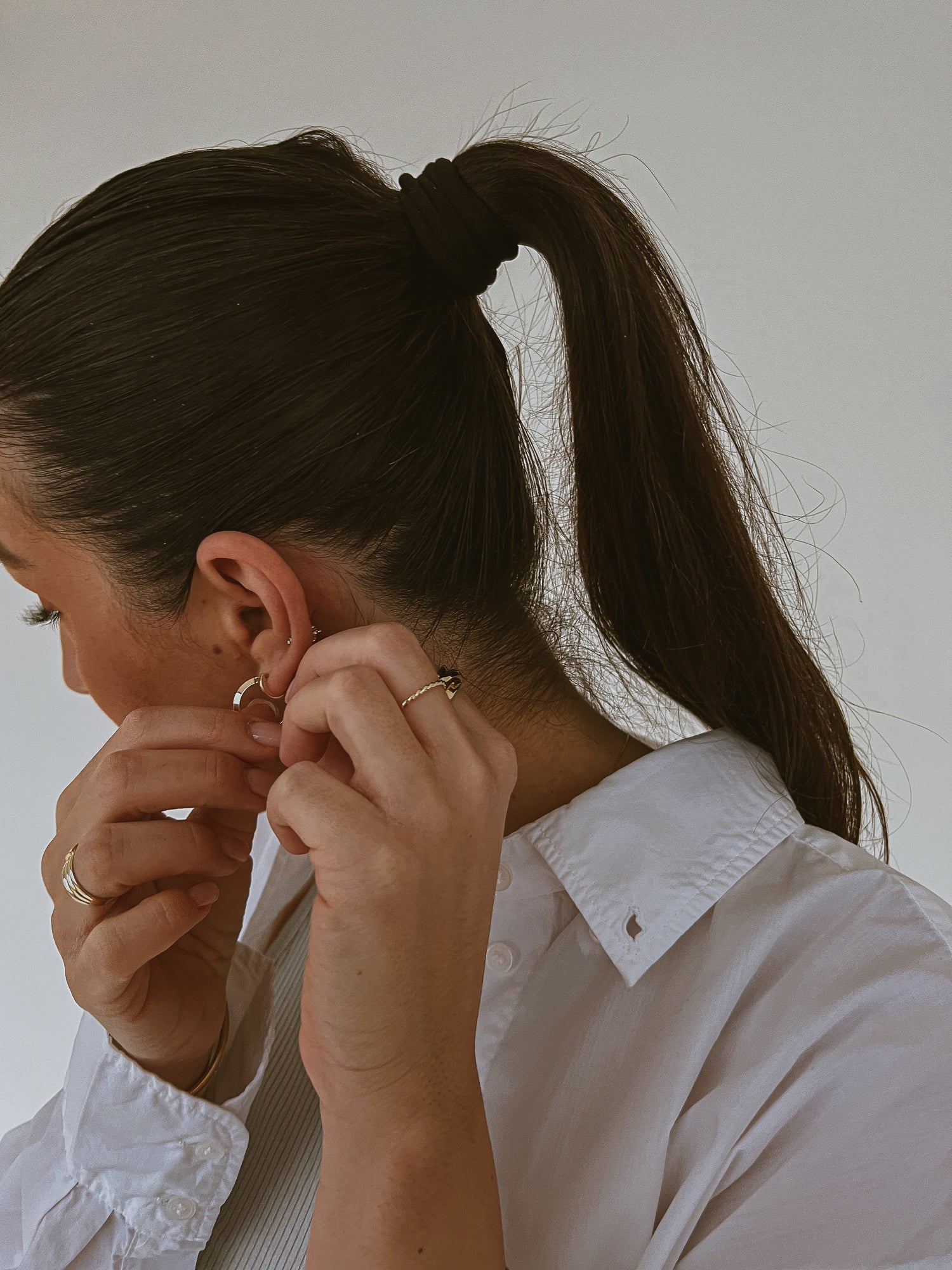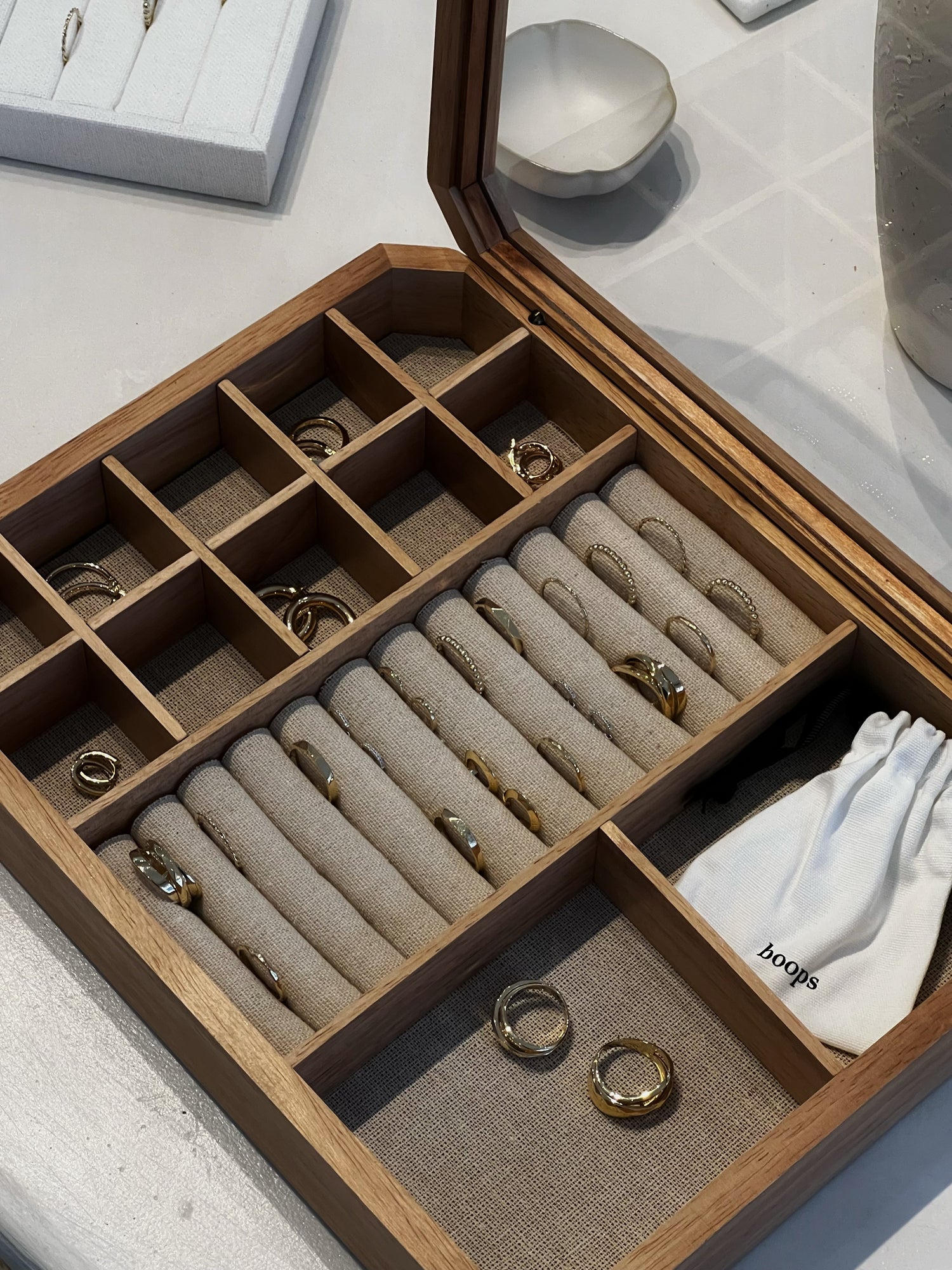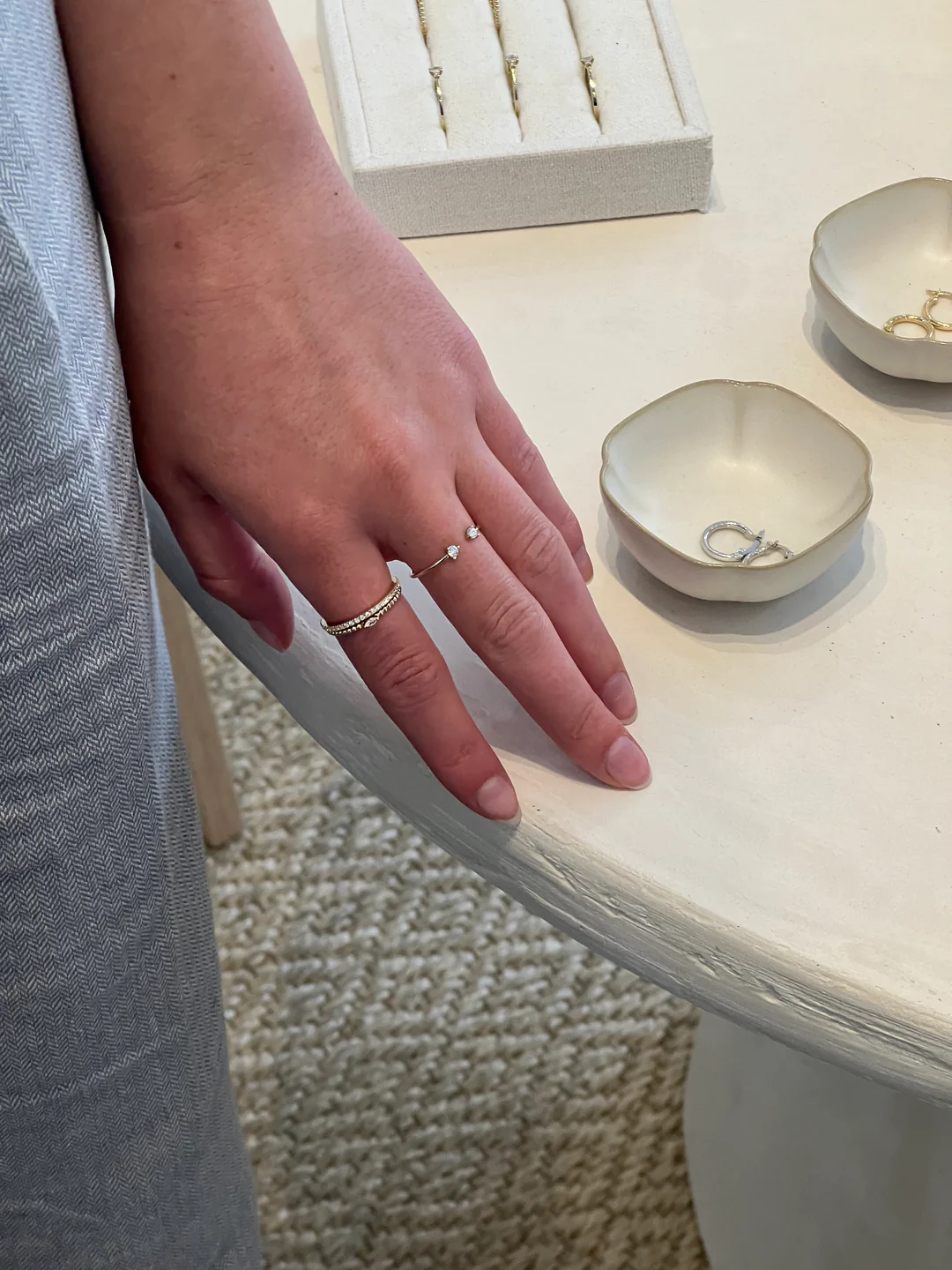Diamonds are among the most popular pieces of jewelry worldwide - which also have a strong symbolism. For many people, for example, they are inextricably linked to marriage. In fact, diamonds are the hardest natural material in the universe, and they are even referred to as the "king of gemstones." And as fascinating as their texture is, they also look beautiful.
That's exactly why we've been including diamonds in our boops collections for some time now: for example, in some of our basic studs. But not all of our diamonds are treasures from nature. Because some of them are "lab grown diamonds". We would like to tell you more about that now.
How are natural diamonds created?
In nature, diamonds are formed by enormous forces that originate in the earth's glowing core. Hundreds of kilometers below us, temperatures and pressure are so high that carbon crystallizes and becomes a diamond. Through explosions and surrounded by lava, these resistant crystals eventually move closer to the Earth's surface - where they are mined and found by humans.

What are lab grown diamonds?
As the name suggests, lab grown diamonds are created in a laboratory. There are several different processes used to create diamonds. Just like in the depths of the earth, this requires above all a lot of pressure and high temperatures. In addition, a great amount of time and a high level of engineering are important.
The natural processes that turn carbon into diamonds can be imitated extraordinarily well in the laboratory. This cannot simply be taken for granted - because with many other materials, such as our beloved gold, this is not possible. That is exactly why we are also an advocate of lab grown diamonds, which have their own unique advantages.
The main advantages of lab grown diamonds
Especially from an ecological and sociological point of view, the advantages of laboratory-grown diamonds are very clear. The precious crystals are extracted from the earth, for which deep mining is required. A particularly large number of diamond mines is located in China and in Africa.
The extensive mines burden the environment - for example, by disturbing nature and producing waste. At the same time, the humans working in the mines often suffer from particularly poor working conditions. And they hardly earn anything from the lucrative business with the "kings of gemstones". If you still want to opt for natural diamonds, you should pay attention to responsible suppliers and, if possible, buy second-hand. This is exactly what is important to us for our boops jewelry with natural diamonds.
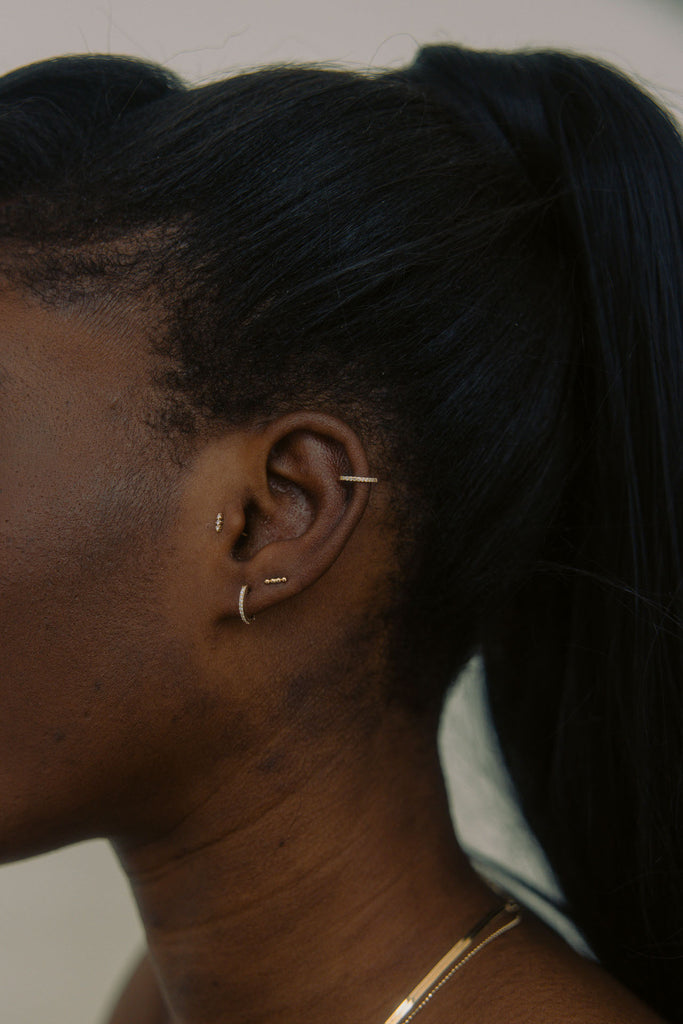
However, lab grown diamonds have the decisive advantage that neither the environment nor people have to suffer from the extraction of the precious crystals. That's why we like to focus in part on lab grown diamonds. And this is also worthwhile financially, because lab grown diamonds are usually 40 to 70 percent cheaper than natural ones. This enables us at boops, for example, to offer more jewelry with diamonds at an affordable price.
Distinguishing between natural and lab-grown diamonds
The formation of diamonds is essentially the same in nature and in the lab - even if the environment is completely different. But what about the result? Can you tell the difference between natural and lab grown diamonds? And are lab grown diamonds therefore also genuine?
The "synthetic" diamonds are indistinguishable from the real treasures of nature in terms of their optical and physical properties. So, with the naked eye, you can't tell if it's a natural diamond or a lab grown diamond. However, there are special devices that can determine the subtle difference. For us, this means that lab-grown diamonds are also "real", just not natural.
If you stop reading now, you can do the test yourself: check out our diamonds collection online or stop by our store in Vienna. Then you can try to distinguish lab grown diamonds from natural crystals. For those who are curious, we will now give you a brief insight into which diamonds come from the lab in boops jewelry.
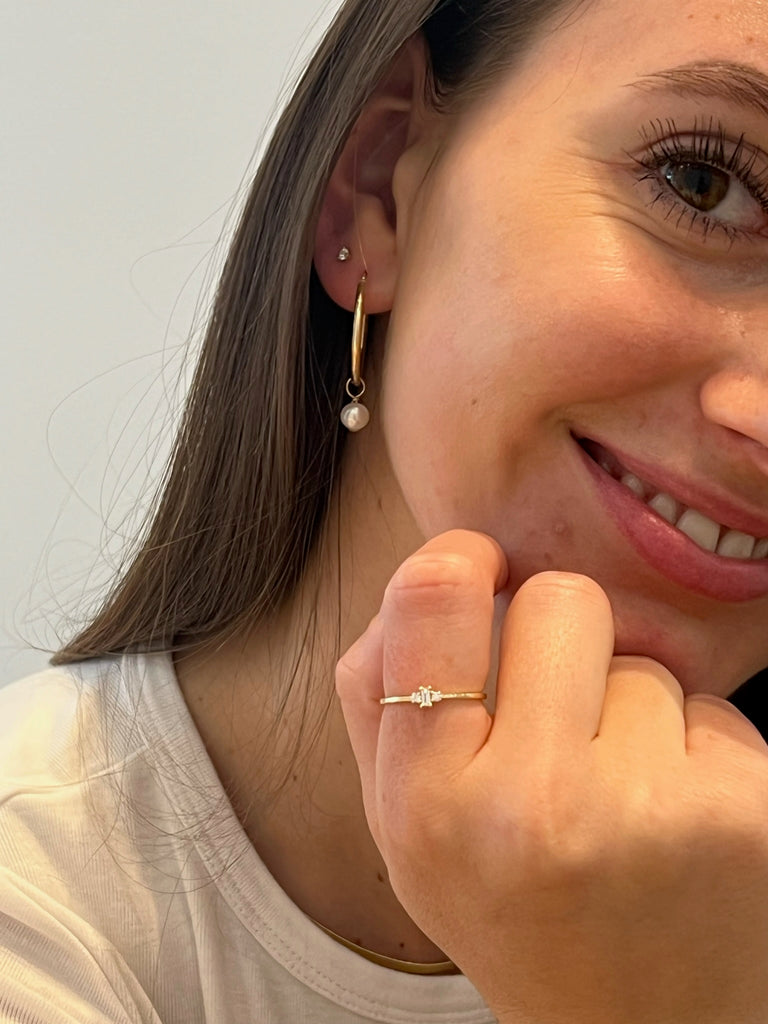
Lab grown diamonds in the boops diamond collection
In our diamond collection we use lab grown diamonds especially for the rings. We simply love the combination of pure real gold and sparkling diamonds - and sometimes we like to use a bit more or bigger crystals. Through lab grown diamonds we can offer our favorite designs at an affordable price. Without compromising on quality. For the following rings we use diamonds from the lab:
- eternity ring: a very special piece of jewelry set entirely with lab grown diamonds. It makes for a real statement, whether you wear it yourself or give it to your loved ones.
- art deco ring: Inspired by the 1920s (of the last century), this gold ring is set with three lab grown diamonds. A baguette-cut center piece and two smaller diamonds make up the special vintage design.
- marquise diamond ring: This it-piece for the hand combines two special design elements. The bubble design made of real gold and a marquise-shaped diamond in the center. This diamond is also genuine from the lab.
- twin diamond ring: This delicate ring made of real gold is set with two lab grown diamonds - with a small space between them. This makes the twin diamond ring look particularly fine and almost weightless.

In addition to these diamond rings, some of our earrings are also set with lab grown diamonds, like our diamond stud. Other boops jewelry pieces are set with natural diamonds, such as the shiny babies or the diamond heart necklace.
If our jewelry is set with lab grown diamonds, you will always find this information in the product description. But we think: Both natural and lab grown has its advantages. And in fact, it doesn't actually make a "real" difference. At least none that you can see. Convince yourself of that and take a closer look at our diamond collection.



